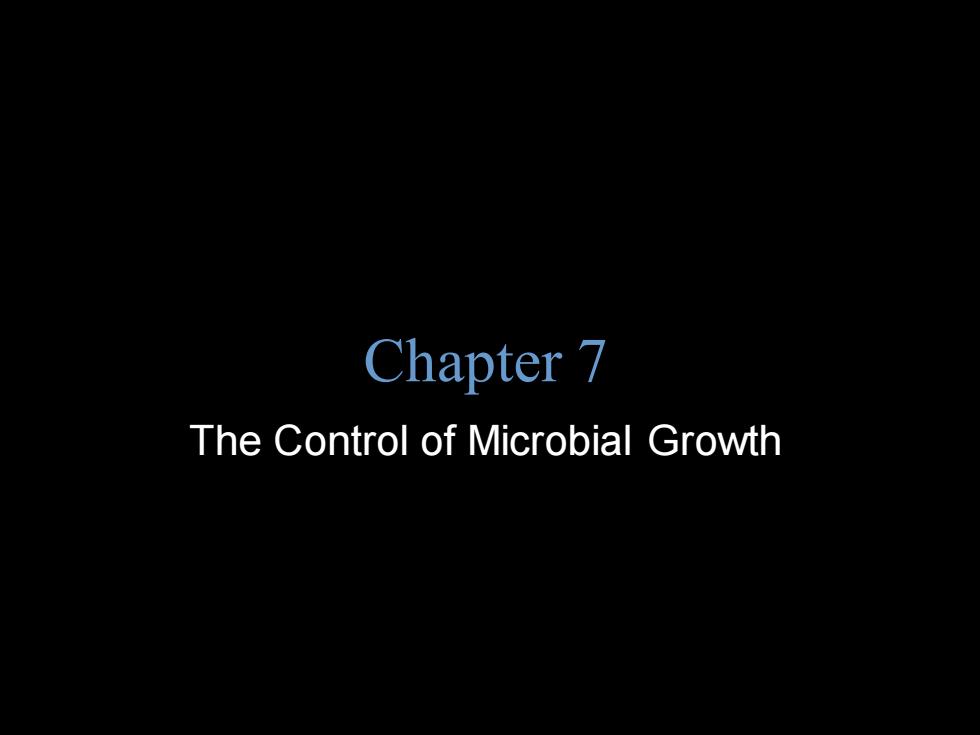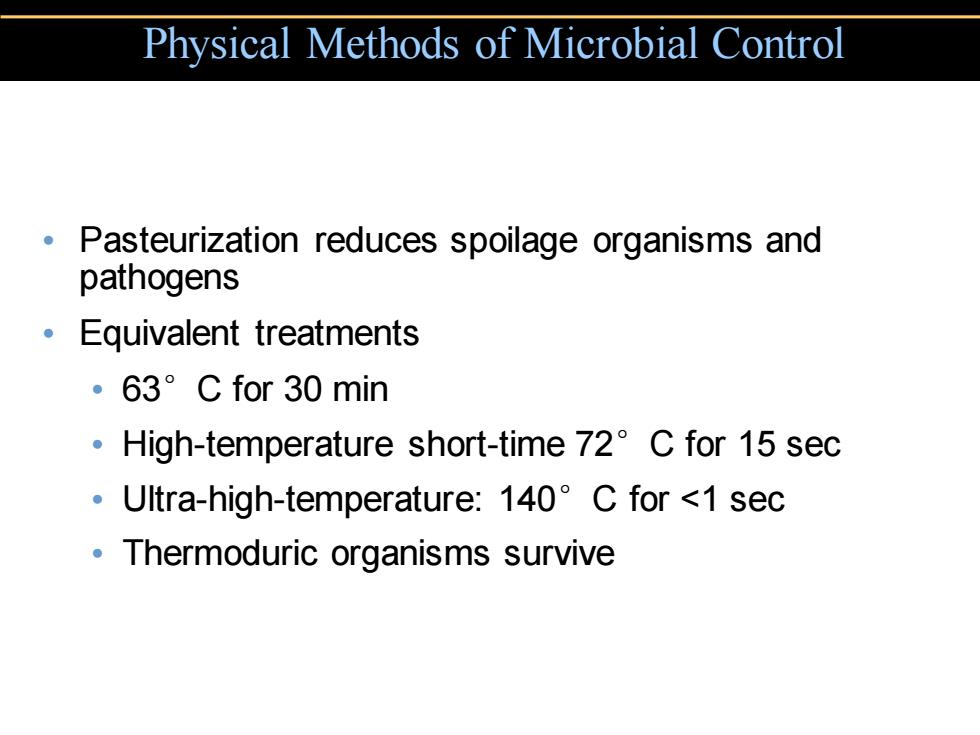
Chapter 7 The Control of Microbial Growth
Copyright © 2004 Pearson Education, Inc., publishing as Benjamin Cummings B.E Pruitt & Jane J. Stein Chapter 7 The Control of Microbial Growth

The Control of Microbial Growth Sepsis refers to microbial contamination. Asepsis is the absence of significant contamination. Aseptic surgery techniques prevent microbial contamination of wounds
The Control of Microbial Growth • Sepsis refers to microbial contamination. • Asepsis is the absence of significant contamination. • Aseptic surgery techniques prevent microbial contamination of wounds

Terminology Sterilization:Removal of all microbial life Commercial Sterilization:Killing C.botulinum endospores Disinfection:Removal of pathogens Antisepsis:Removal of pathogens from living tissue Degerming:Removal of microbes from a limited area Sanitization:Lower microbial counts on eating utensils Biocide/Germicide:Kills microbes Bacteriostasis:Inhibiting,not killing,microbes
• Sterilization: Removal of all microbial life • Commercial Sterilization: Killing C. botulinum endospores • Disinfection: Removal of pathogens • Antisepsis: Removal of pathogens from living tissue • Degerming: Removal of microbes from a limited area • Sanitization: Lower microbial counts on eating utensils • Biocide/Germicide: Kills microbes • Bacteriostasis: Inhibiting, not killing, microbes Terminology

Bacterial populations die at a constant logarithmic rate. 106 1,000,000 One log decrease 90%of population killed 105 750,000 109 103 500,000 6 102 250,000 10 100,000 100 2 3 Time (min.) Figure 7.la
• Bacterial populations die at a constant logarithmic rate. Figure 7.1a

Effectiveness of antimicrobial treatment depends on: Number of microbes SJoNIns 106 Environment 105 (organic matter, temperature, 109 biofilms) High population 103 load Time of Low exposure 102 population load Microbial 10 characteristics 100 0 2 3 4 5 6 Time(min.) Figure 7.1b
• Number of microbes • Environment (organic matter, temperature, biofilms) • Time of exposure • Microbial characteristics Effectiveness of antimicrobial treatment depends on: Figure 7.1b

Actions of Microbial Control Agents Alternation of membrane permeability 。Damage to proteins Damage to nucleic acids
• Alternation of membrane permeability • Damage to proteins • Damage to nucleic acids Actions of Microbial Control Agents

Physical Methods of Microbial Control 。Heat Thermal death point (TDP):Lowest temperature at which all cells in a culture are killed in 10 min. Thermal death time (TDT):Time to kill all cells in a culture Decimal reduction time(DRT):Minutes to kill 90%of a population at a given temperature
• Heat • Thermal death point (TDP): Lowest temperature at which all cells in a culture are killed in 10 min. • Thermal death time (TDT): Time to kill all cells in a culture • Decimal reduction time (DRT): Minutes to kill 90% of a population at a given temperature Physical Methods of Microbial Control

Heat Moist heat Exhaust valve (to remove Steam to Safety Pressure Operating valve(controls steam steam after sterilization) chamber valve gauge from jacket to chamber) denatures proteins Autoclave: Steam Steam under chambe pressure Perforated shelf Sediment screen Steam jacket Thermometer Automatic ejector valve is Pressure regulator thermostatically controlled for steam supply and closes on contact with pure steam when air is To waste line exhausted. Steam supply Figure 7.2
• Moist heat denatures proteins • Autoclave: Steam under pressure Heat Figure 7.2

Physical Methods of Microbial Control Pasteurization reduces spoilage organisms and pathogens Equivalent treatments 。63°Cfor30min 。High-temperature short-time72°Cfor15sec 。Ultra-high-temperature::140°Cfor<1sec Thermoduric organisms survive
• Pasteurization reduces spoilage organisms and pathogens • Equivalent treatments • 63°C for 30 min • High-temperature short-time 72°C for 15 sec • Ultra-high-temperature: 140°C for <1 sec • Thermoduric organisms survive Physical Methods of Microbial Control

Physical Methods of Microbial Control Dry Heat Sterilization kills by oxidation 。Flaming 。Incineration Hot-air sterilization Hot-air Autoclave Equivalent treatments 170°C,2hr 121°C,15min
• Dry Heat Sterilization kills by oxidation • Flaming • Incineration • Hot-air sterilization Physical Methods of Microbial Control Hot-air Autoclave Equivalent treatments 170˚C, 2 hr 121˚C, 15 min